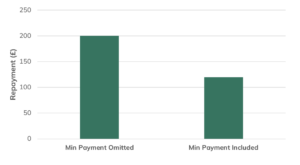Consumer Duty Part 1: Behavioural Biases
Posted: 11/12/2022


What is Consumer Duty?
The Financial Conduct Authority (FCA) has produced a new set of Consumer Duty rules, which will come into effect from July 2023. The goal of the new rules is to set higher and clearer standards for consumer protection in financial services, and requires financial institutions to put their customers’ needs first. The FCA are hoping that the new Consumer Duty rules will produce four main outcomes. These are:
- Products and services: financial products and services will be specifically designed to meet the needs of customers, and customers will be sold the product which best meets their needs.
- Price and value: the price of products and services will be fair to consumers.
- Consumer understanding: communications between financial institutions and consumers will help consumers make effective, timely, and properly-informed decisions about their finances.
- Consumer support: comprehensive consumer support will be in place to help consumers to understand financial products and services, and to act in their own best interests.
How will the new Consumer Duty rules affect me?
In order to achieve these outcomes, financial institutions must analyse their products to ensure that they are not exploiting behavioural biases embedded in their consumers’ product journeys, which might lead to a consumer making a financial decision that isn’t right for them. Behavioural biases are mental shortcuts we use when we are making decisions, which may lead us to make an irrational choice.
One behavioural bias that financial institutions may inadvertently be exploiting is the anchoring effect. The anchoring effect describes the human tendency to rely too heavily on the first piece of information offered when making a decision1. The anchoring effect is present in many financial products, notably in credit card debt repayment plans. Detailing a minimum monthly repayment amount for credit card debt makes people more likely to pay back an amount of money close to the minimum monthly repayment amount, because the figure acts as an “anchor” in their minds. This means that people may pay back less of their debt each month than they can afford to do, which will lead to more interest being added to their debt, and paying more in the long-run2.
Figure 1: Average repayment of credit card debt per month

Source: Stewart, N. (2009). The cost of anchoring on credit card minimum payments. Psychological Science, 20(1), 39-41.
What can Dectech do to help?
There are many other behavioural biases that financial services providers may inadvertently be taking advantage of, that it is important to understand in order to comply with the new Consumer Duty rules. Dectech specialises in behavioural science, and has experience working with financial institutions on consumer duty. Reach out to us if you would be interested in a chat about how we can help you to comply with the FCA’s new Consumer Duty rules.
1. Caceres-Santamaria, A. J. (2021). The Anchoring Effect. Page One Economics. Economic Research, The Federal Bank of St. Louis. URL: https://files.stlouisfed.org/files/htdocs/publications/page1-econ/2021/04/01/the-anchoring-effect_SE.pdf (Accessed 01/12/2022).
2. Stewart, Neil (2009) The cost of anchoring on credit-card minimum repayments. Psychological Science, Vol.20 (No.1). pp. 39-41. doi:10.1111/j.1467-9280.2008.02255.x